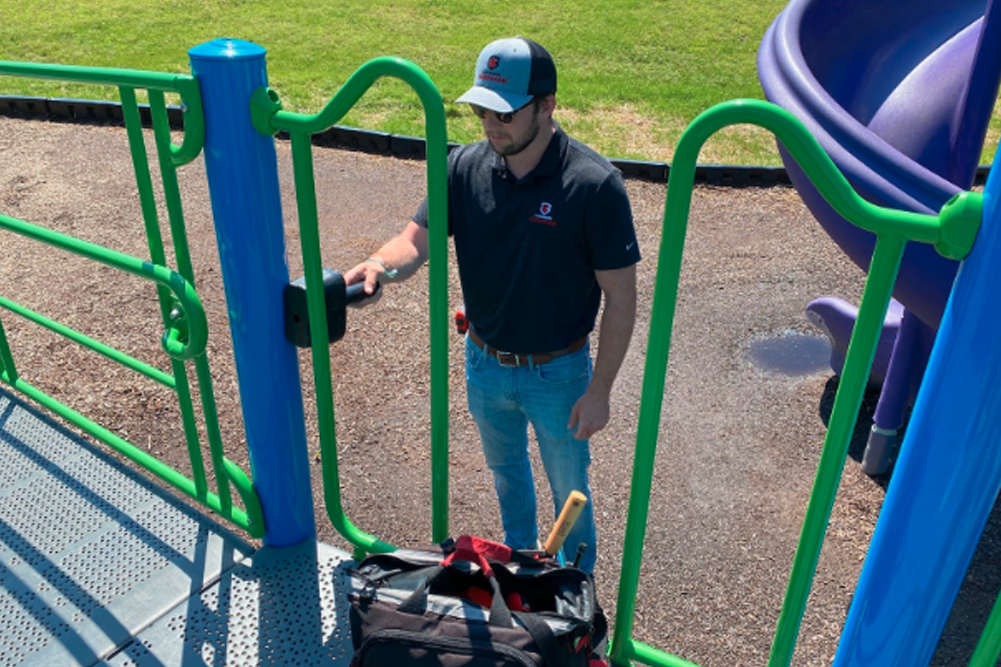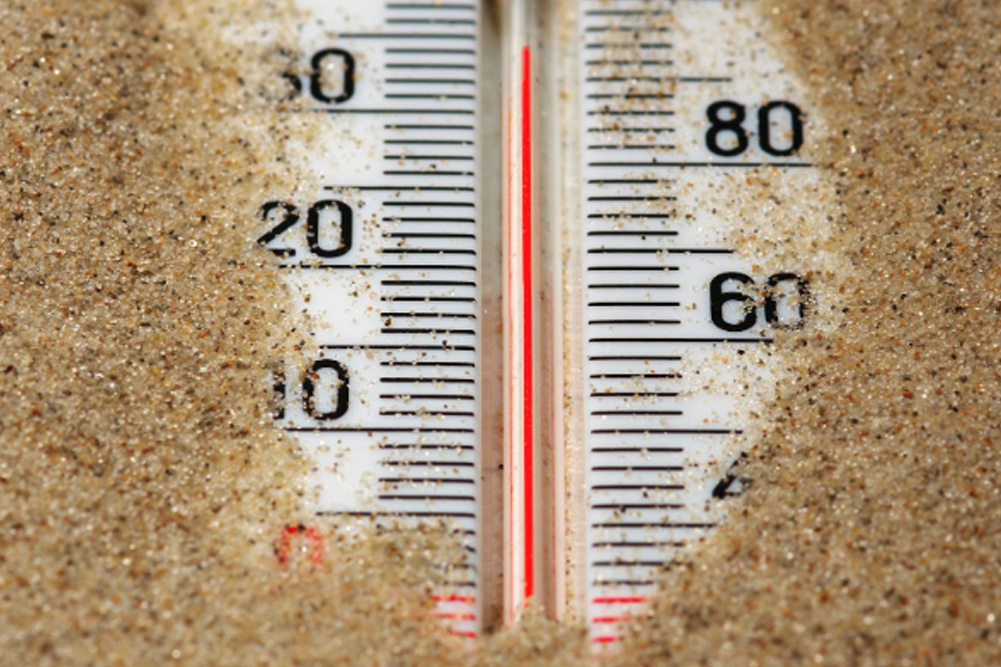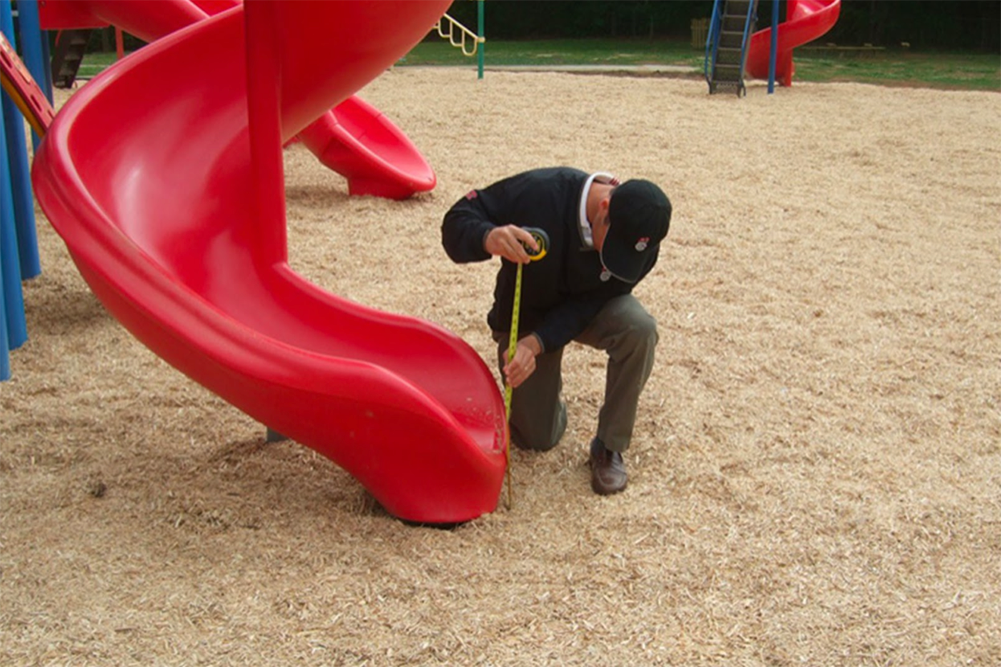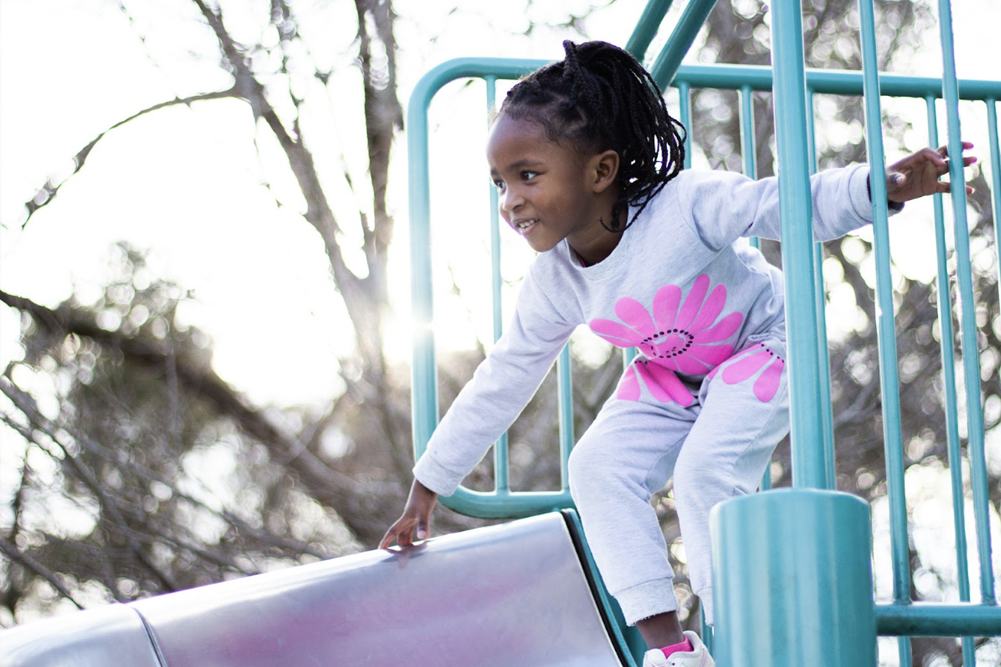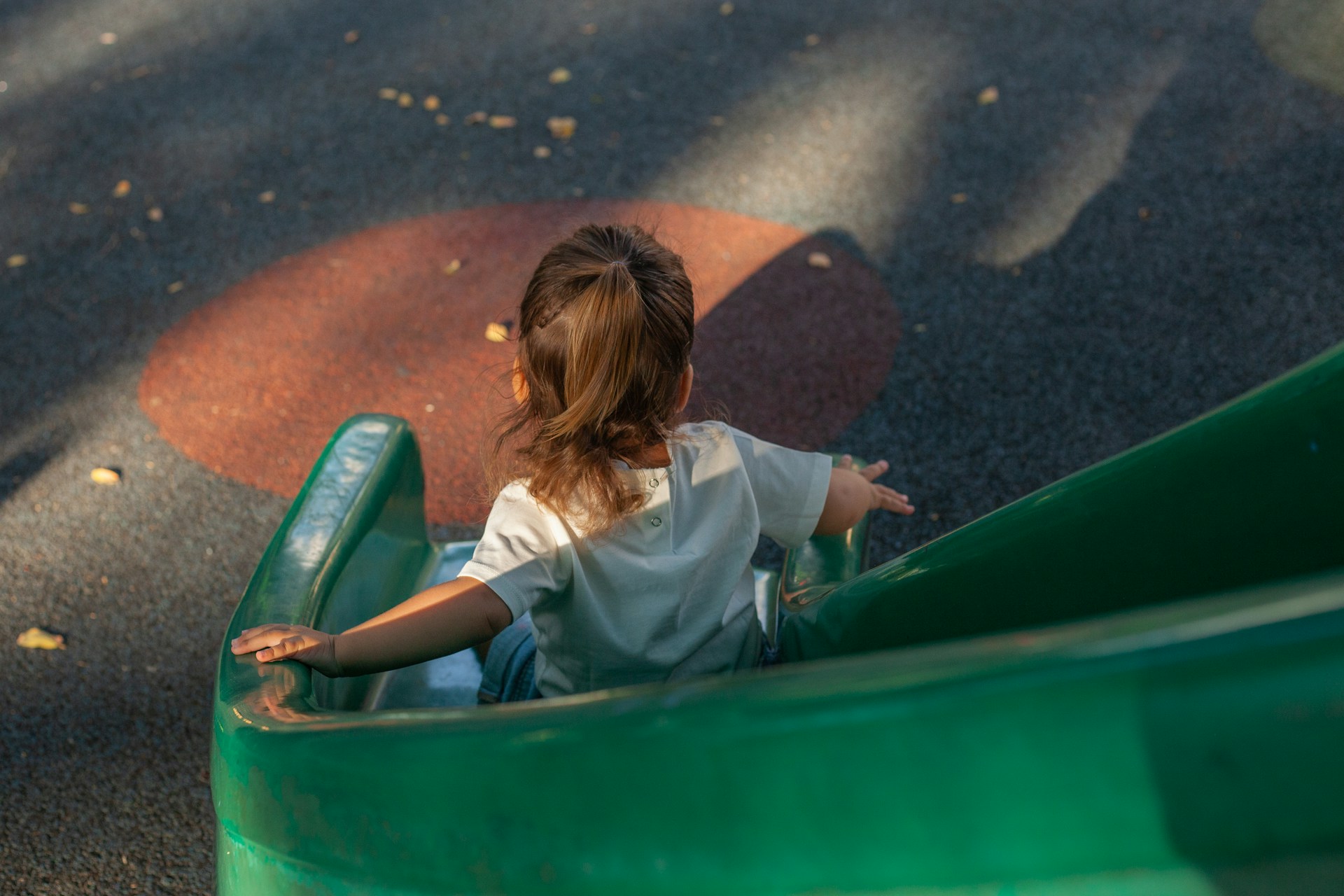Playground repair and maintenance can be daunting. Without regular inspection, there are a number of factors that can make a fun outdoor experience on the playground a dangerous one.
Half of the battle is knowing what to look for when it comes to playground safety and repair. Here are eight of the most common hazards to be on the lookout for.
1. Insufficient or Damaged Playground Surfacing
Insufficient surfacing is one of the most common hazards we see on playgrounds. If you’re dealing with an older playground, your surfacing may be wood chips, gravel, or another material that simply isn’t safe for children to fall on.
Even if an adequate loose-fill surface was chosen, if it isn’t maintained properly, it may become too shallow in frequent use zones. Similarly, if you opted for a unitary surface, it can easily become a tripping hazard without regular maintenance.
Luckily, surfacing is an easy playground repair to perform. A playground maintenance worker will replace any damaged pieces and/or add material to keep loose-fill areas up to minimum depths.
2. Unsafe Playground Elements
Just like with playground surfacing, outdated features and elements are common at playgrounds across the country. These elements might include:
- Tires, which may cause tripping or entanglement hazards
- Ropes, which may cause entanglement, strangulation, or rope burn
- Wooden elements, which aren’t as durable as vinyl or rubber and may cause splinters
- Metal slides in direct sunlight, which can cause burns
The good news is that there are simple playground repairs that can mitigate the risks of these elements. Remove them or replace them with modern equipment that poses fewer safety risks but provides just as much fun!
3. Crush & Shear Points
Crush and shear points are another common hazard found on most playgrounds. They occur where moving pieces of playground connect and can crush or cut a child, like where a swing chain connects to its seat.
There are a number of easy upgrades to consider when it comes to playground repair. Most new equipment has guards or smaller clearances that can’t trap children’s tiny fingers.
4. Pest Infestations
Pest and insect infestations can pose a serious threat to children at play. A playground inspector can assess issues like bee and wasp nests and create a plan for removal and related repair if necessary.
5. Entanglement & Entrapment Risks
Two serious playground hazards commonly talked about are entanglement and entrapment. Entanglement risks are areas where a child’s clothing, jewelry, hair, or other accessories get stuck in a moving part of the playground equipment. Entrapment risks involve holes, gaps, or spaces in equipment where children’s limbs or heads can get trapped or stuck.
Both of these risks can be identified and mitigated with the help of a licensed playground inspector. Looking for a DIY approach to improving your playground safety? Try an app like Park Protector that guides you through the process of inspecting your playground yourself.
6. Lack of Adult Supervision
A lack of appropriate supervision is another common cause of injuries on the playground. Installing signage with rules for your playground is a great way to encourage conversations about safe play and supervision.
Providing comfortable seating with a clear view of your playground equipment is another simple method for improving supervision and avoiding accidents and injuries. The easier you make the task, the more likely adults will be to actively supervise children at play.
7. Protruding Bolts & Hardware
Protruding bolts and loose or damaged hardware can pose a serious risk to children on your playground. Hardware can cause cuts and bruises or catch on clothing, jewelry, or hair. Loose, damaged, or missing hardware can affect the overall integrity of your play structures and cause major damage if not repaired in a timely manner. Luckily, most hardware issues are simple, affordable repairs.
8. Insufficient Space for Playground Equipment
We get it, you want to squeeze in every last piece of equipment you can fit in your space. However, in doing so, ensure that you leave enough space between playground elements to allow for safe fall zones.
Insufficient space can lead to children playing in fall zones when they can’t find appropriate open play space. If you find this is a problem on your playground, consider contacting a playground inspector to provide insight on how you can update and adjust your playground equipment for improved safety.
Feeling overwhelmed by the prospect of playground repair? Have one of our licensed playground inspectors come take a look to get started on improving the safety and longevity of your equipment.

